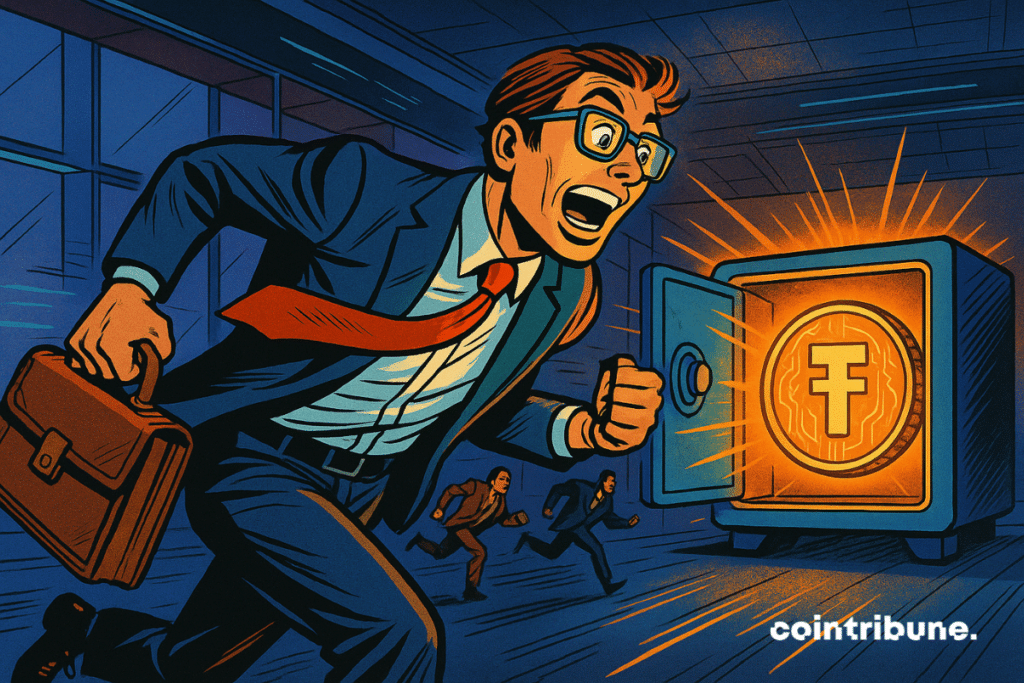VCs Pivot Hard: Stablecoins Now Eat 60% of Crypto Funding Plates
Move over, DeFi degens—Wall Street’s proxy warriors are dumping dry powder into the ’boring’ corner of crypto. Tether’s $110B market cap just winked at Visa’s quarterly volume.
Hedgies want off-ramps, not Uniswap gambles
The narrative flipped fast: 2023’s ’safe haven’ plays now command 3x the funding of NFT platforms. Even a16z—once laser-focused on web3—quietly tripled its USDC reserves last quarter. Because nothing screams ’innovation’ like digitizing the USD, right?
Regulators hate this one trick
Circle’s IPO filing exposed the dirty secret: stablecoins aren’t disrupting finance—they’re becoming its new plumbing. Every institutional adoption headline hides two compliance officers grinding teeth to dust.
Closing thought: When VCs chase ’stability’ in a 24/7 volatility casino, maybe the real bubble was their risk appetite all along.

In Brief
- Stablecoin capitalization surged by 12% in Q1 2025, reaching $227.1 billion, even as the broader crypto market declined amid rising geopolitical tensions.
- “Dollar settlement remains the leading use case for cryptocurrencies,” states Pitchbook in its latest report, predicting a sharp rise in investment for startups focused on payments, cross-border transfers, and treasury management.
- Analysts expect stablecoin capitalization to grow tenfold by 2028, potentially reaching $2 trillion.
Stablecoins, a Safe Haven in the Crypto Storm
For venture capital investors, the verdict is clear: dollar payments via stablecoins represent today the most tangible and promising use of the blockchain.
The first quarter of 2025 confirmed this trend. While the US trade war caused a general collapse of classic cryptos, stablecoins showed remarkable resilience. Their total market cap jumped by $25 billion, now reaching $227.1 billion.
This performance during a crisis did not go unnoticed by analysts. In its latest report, the Pitchbook team is categorical:
Dollar settlements remain the flagship application of cryptocurrencies, partly spared by wider risk aversion movements.
For investors, this stability in the face of market turmoil is a major asset.
The phenomenon extends far beyond the United States. In Europe, Meta plans to integrate USDC and USDT to pay creators on its social networks.
USDTUSD chart by TradingViewAt the same time, many countries are developing their own alternatives to the dollar. Nations such as Singapore and the United Arab Emirates are seeking to create stablecoins backed by their national currencies, aiming to free themselves from the dollar’s dominance in the crypto ecosystem.
An Ecosystem That Attracts Tech Giants and Faces Regulatory Challenges
Projections for the stablecoin market are dizzying: according to some analysts, stablecoin capitalization could reach $2 trillion by 2028, nearly ten times their current value.
This expected exponential growth naturally attracts the attention of venture capitalists, who anticipate “a sharp increase in investments in the short term, particularly in startups specializing in payments, fund transfers, and treasury management.”
However, the path to this growth is not without obstacles. Security remains a crucial issue, especially after incidents like the Bybit hack.
According to Pitchbook, institutional investors will become more demanding, requiring real-time reserve verification tools and solutions simplifying cryptographic key management.
Startups capable of solving these technical problems will be the big winners in upcoming funding rounds.
On the regulatory front, the outlook has recently darkened. In the United States, the GENIUS bill, which aimed to regulate stablecoins, recently failed in the Senate with a vote of 48 against 49, far from the 60 votes required.
This legislative setback could slow institutional adoption but does not dampen the enthusiasm of venture capitalists.
The most anticipated event remains the IPO of Circle, the issuer of USDC. This IPO could not only definitively legitimize the stablecoin business model but also boost valuations across the entire payments and crypto infrastructure ecosystem.
In sum, the stablecoin market today represents an essential bridge between traditional finance and the crypto world. A recent Fireblocks report highlights this decisive shift: 90% of financial institutions use or plan to integrate these assets. This massive adoption by banks, once reluctant, is profoundly reshaping the contours of the global digital economy.
Maximize your Cointribune experience with our "Read to Earn" program! For every article you read, earn points and access exclusive rewards. Sign up now and start earning benefits.

